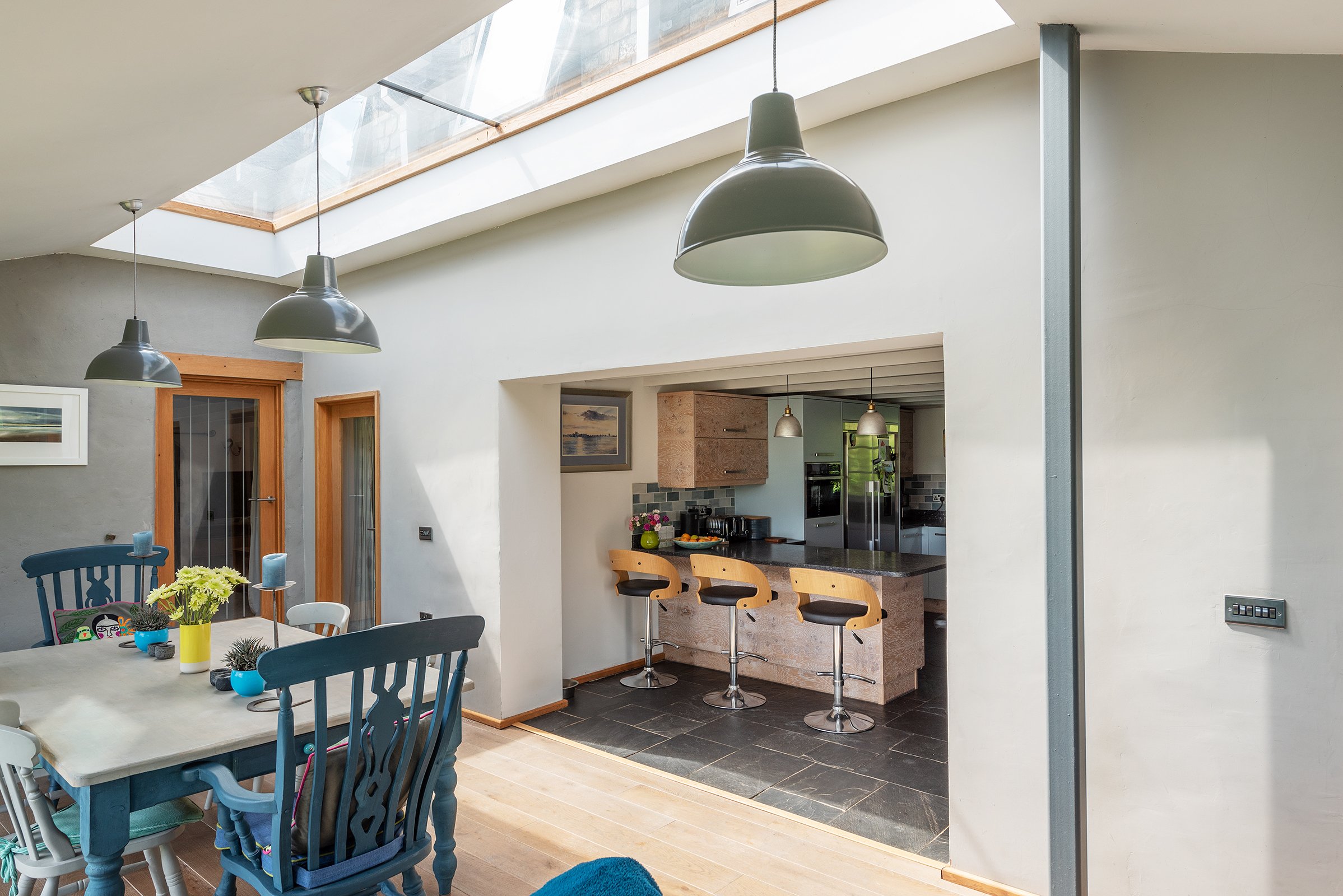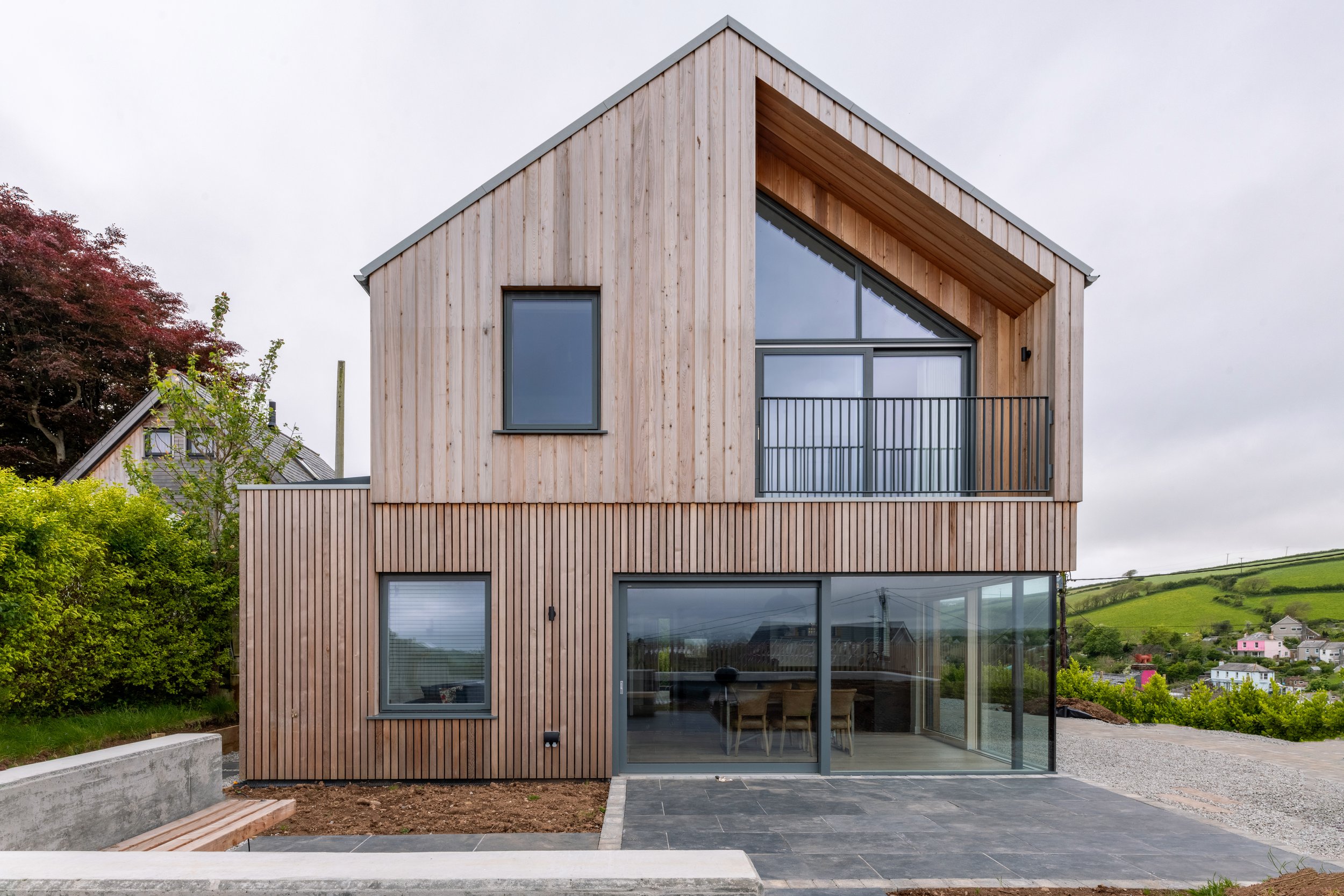What are the advantages of a Net Zero home?
Net zero homes are designed to reduce energy demand, and produce (or offset) as much energy as they consume, creating a balance that benefits both the environment and your ongoing running costs. We’ll take you through some of the key advantages of a net zero home and why they represent the future of living in the UK.
Net zero homes, although high performance, do not need to be overly high tech or significantly costly upfront. The chances are they will be equipped with some advanced energy-efficient systems, but the key drivers should be a passive (natural / background) approach, in combination these will drastically reduce your reliance on costly external energy sources. Careful design of your building’s shape and openings, in combination with features like high-quality insulation, airtight construction, heat recovery ventilation, and renewable energy systems (such as solar panels) work together to minimise energy consumption. The outcome is 1) lower energy bills - which could in fact generate a small income for you, if you exported more energy to grid than importing, and 2) protection against rising energy costs.
1- Significant energy savings.
A net zero home aligns with the global push towards reducing carbon footprints and combating climate change. By minimising energy demand, and using renewable resources, these homes play a vital role in protecting the planet. The construction industry needs to be a significant part of the solution, as it is responsible for a large % of overall emissions.
Reduced Greenhouse Gas Emissions: Net zero homes rely on renewable energy rather than fossil fuels, cutting harmful emissions.
Resource Conservation: Efficient designs, and water and energy systems, reduce waste and promote sustainable resource use.
2- Environmental benefits.
3- Improved comfort and living conditions.
Net zero homes are designed with healthy modern living in mind, ensuring superior comfort and air quality.
Consistent Temperatures: Careful design of openings and shading, along with advanced insulation and thermal bridging techniques, maintains a steady indoor temperature year-round.
Enhanced Air Quality: Airtight construction paired with heat recovery ventilation systems ensures a constant supply of pre-warmed fresh, filtered air, reducing allergens and pollutants, whilst maintaining comfortable room temperatures. Condensation and mould growth become a thing of the past.
Bright and quiet Living: Superior modern glazing enables rooms to be flooded with natural light, without significant heat losses, whilst reducing external noise. The results are a bright, uplifting, and peaceful indoor environment.
The demand for sustainable, energy-efficient homes is on the rise, as people are becoming more attuned to fluctuations in utility bills, ongoing maintenance costs, and quality of their home environment. A net zero home represents a forward-thinking investment.
Higher Resale Value: Buyers are willing to pay a premium for homes with lower operational costs and eco-friendly credentials.
Market Resilience: As regulations increasingly favour energy-efficient buildings, net zero homes are likely to retain their value over time.
4- Increased property value.
5- Future-proofing against regulations.
Governments are introducing stricter building regulations to promote sustainability. Investing in a net zero home ensures compliance with future standards, saving you from costly retrofits.
Cornwall Council’s Example: In areas like Cornwall, policies such as SEC1 Part 2b2 already require higher energy efficiency for new builds, setting a precedent for the rest of the UK.
Ahead of 2025 Building Regulations: Net zero homes already meet or exceed these anticipated requirements.
6- Financial incentives and payback.
Homeowners of net zero properties often benefit from financial incentives and long-term returns. If / when designing a net zero home, or aspects of it, decisions should be considered in terms of ‘cost benefit’ and ‘payback period’ to help inform a cost sensible approach.
Low build costs: Careful design can mean that net zero homes do not attract a significant build cost premium, if it all.
Feed-In Tariffs: By selling excess energy back to the grid, you can generate additional income.
Energy Savings Over Time: The upfront investment in a net zero home pays off through reduced energy costs and maintenance requirements.
7- Positive impact on the community.
Net zero homes tend to try and prioritise local materials and labour, where possible, supporting regional economies and reducing travel emissions. Embodied carbon will increasingly become an important aspect of construction (carbon / energy used in construction / supply and materials), further supporting this approach. At Dig Architects, in South East Cornwall - straddling the Devon border near Plymouth - we produce designs to ‘work with’ expert local tradesmen and suppliers, to craft homes that blend seamlessly with their environment.
Local Employment: Building net zero homes can support skilled tradesmen and suppliers in your area.
Harmonised Design: Homes that are tailored to make the most of the local climate and natural surroundings, and use local materials, enhancing both aesthetics and efficiency.
8- Conclusion.
A net zero home is not just an investment in your property but also in a sustainable future. From significant cost savings and improved comfort, to environmental protection and enhanced property value, the advantages of a net zero home are clear. At Dig Architects, we specialise in designing affordable, bespoke net zero homes that harmonise with the local environment and deliver exceptional results.






